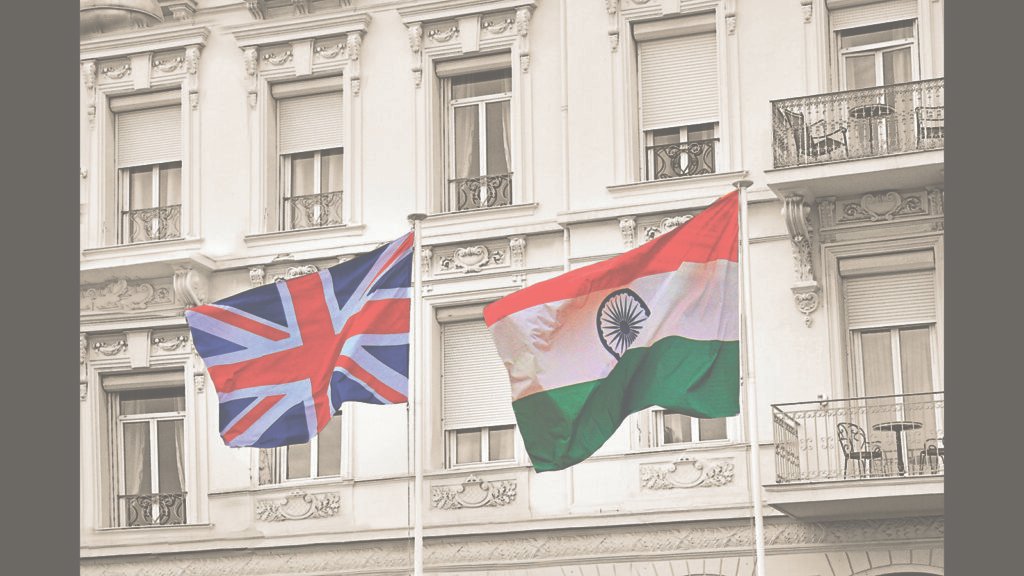
The conclusion of negotiations for a free trade agreement (FTA) Between India and the UK has been met with resounding optimism in both nations. This Pivotal Moment Marks a Significant Leap Forward in the Bilateral Relationship, REPRESTING A Robust Commitment to Enhancing Trade and Economic Integration. Furthermore, the finalization of this fta amidst the turmoil affecting the multilateral trading system – Driven mainly by the ERATIC TARIFF Policies of the Us – The US. The India-Uk FTA is a Crucial Countermeasure to the UncertainTies in Global Trade. It also confirms the broader trend that other bilateral and regional sites are opening up rapidly as the world trade organization (WTO) Struggles to live up to live up to it International Trade. At Least for the Foreseable Future, The Bulk of Rulemaking on International Trade Might Occur Through Such Ftas.

While a Comprehensive Analysis of the FTA will only be possible on the treatment text is published, Several Critical issues deserve attention. Primarily, it seems that bot parties have made significant gains in terms of market access for goods. India is poised to reduce its tariff rates on whiskey and gin from 150% to 75%, Evently reaching 40% over the next decade. Tariff Reductions Are also on the Horizon for Automobiles. In Return, Indian Textiles, Footwear, Leather Products, and Gems and Jewelery will enjoy preferentiial access to the UK market.
At a time when India’s expenses to the US face substances, this preferential access to the uk presents a Valuable Opportunity for Indian Businesses. While the Uk Market May Be Smaller Than The American One, this Arrangement will Bolser Indian Exports and Mitigate some of the setbacks caused by the trumpian tariffs. Additional, India Stands to Gain in the Realm of Services as the UK Commits to Liberalising its Labor Market, Facilitating Easier Account for Indian Professionals Seeking Oportunities in the Uk.
As highlighted in the UK Government’s Press Release, The Inclusion of Non-TRADE ISSUES Such as Labor Rights, Gender, Anti-Corruption Measures, and Development is a Pivotal aSpect of the fet. While the depth of India’s commitments on these fronts can be determined only when the text builds available, the decision to incorporate these non-trade elements into the fta is notworthy.
Take labor, for instance. Historically, new delhi has resisted the introduction of labour issues into economic treates, holding the position that trade agrements should serve as mechanisms for politics Laws. There has also been a valid concern that developed nations might exploit labore standards as a pretext for protectionism. However, India’s Recent Trend in Fta Negotiations Significant Shift in Perspective Regarding The Linkage Between Trade and Labor Rights.
India’s Acceptance of Labor-Related Provisions in its FTA with the European Free Trade Association (Efta) Last Year and Its Commitments Under The Indo-Pacific Framework Framework Framework Supply Chain Agreement Illustrate a Departure from its longstanding option. The Inclusion of Labor Standards in the FTA with the UK Marks Yet Another Decisive Step for India, Showcasing Its Evolution Towards Embracing A Stance that Integrates TRADE and Labor Rights.
Interestingly, the press releases are the two countes do not mention the elephant in the room – the UK’s Carbon Border Adjustment Mechanism, or CBAM, which must bees a tax on India ‘ Carbon-Intensive Products Such as Steel, Aluminum, and Cement. This has been a sticky issue between the two sides, India believes it puts its products at a competitive disadvantage. It is unclear whather the two sides have resolved their differentises or if this issue has been dropped from the fta. The cbam isesue is equally perinent in India’s FTA Negotiations with the Eu. What India has agreed with the uk on cbam might become a template in its talks with the eu.
Foreign Investment Protection Remains Absent from the FTA as the two parties negotiate a separete bilateral investment treatment (bit), which was initiated to be folded along. In an era dominated by intricate global supply chains, trade and investment are intricately linked. Thus, securing a bit with the uk is equally important as it will Safeguard British Investments in India Under International Law and Vice Versa. Unfortunately, updates on the bit have been sparse, and finalization appears to be pending.
India’s Unilateral Termination of the 1994 bit between the two sides in 2017 raised concerns among foreign investors. While the terminated bit protects investments made before the termination for 15 years, that is till 2032, any investments made after the termination are excluded from International Legal PROTECTIONS. This uncertainty has undersrstandably caused anxiety Among Foreign Investors.
The bit Negotiations must conclude quctly, especially Considering India’s Internation to Revise Its 2015 Model Bit, Indicating A Readness to Adopt more Flexible Terms. Finalising this agreement is vital for boosting investor confidence and full realising the benefits of the India-uk fta.
A key question is when the treatment is expected to come into force. That will take some time. Before Ratifying The Treaty, The UK, in Accordance With Its Constitutional Reform and Governance Act 2010, will place the treatment on the floor of its parliament for scruutiny. The UK followed this trend for its recent Ftas with Australia and New Zealand. There is no institutionalized mechanism in India for parliamentary scrutiny of a treatment before its rati.
In Sum, The India-Uk FTA is a Key Milestone and One of the Few Trade Agreements India has signed with a developed economy. It will provide a template for India’s future fta engines, especially on trade issues, and the eu and others will relay on it to strike a deal with India.
Prabhash Ranjan is Professor and Vice-Dean (Research), Jindal Global Law School, OP Jindal Global University. The views expressed are personal







